- Parents Home
- Para Padres
- A to Z Dictionary
- Allergy Center
- Asthma
- Cancer
- Diabetes
- Diseases & Conditions
- Doctors & Hospitals
- Emotions & Behavior
- First Aid & Safety
- Flu (Influenza)
- Food Allergies
- General Health
- Growth & Development
- Heart Health & Conditions
- Homework Help Center
- Infections
- Newborn Care
- Nutrition & Fitness
- Play & Learn
- Pregnancy Center
- Preventing Premature Birth
- Q&A
- School & Family Life
- Sports Medicine
- Teens Home
- Para Adolescentes
- Asthma
- Be Your Best Self
- Body & Skin Care
- Cancer
- Diabetes
- Diseases & Conditions
- Drugs & Alcohol
- Flu (Influenza)
- Food & Fitness
- Homework Help
- Infections
- Managing Your Weight
- Medical Care 101
- Mental Health
- Nutrition & Fitness
- Q&A
- Safety & First Aid
- School, Jobs, & Friends
- Sexual Health
- Sports Medicine
- Stress & Coping
Lungs and Respiratory System
What Are the Lungs and Respiratory System?
The lungs and respiratory system allow us to breathe. They bring oxygen into our bodies (called inspiration, or inhalation) and send carbon dioxide out (called expiration, or exhalation).
This exchange of oxygen and carbon dioxide is called respiration.
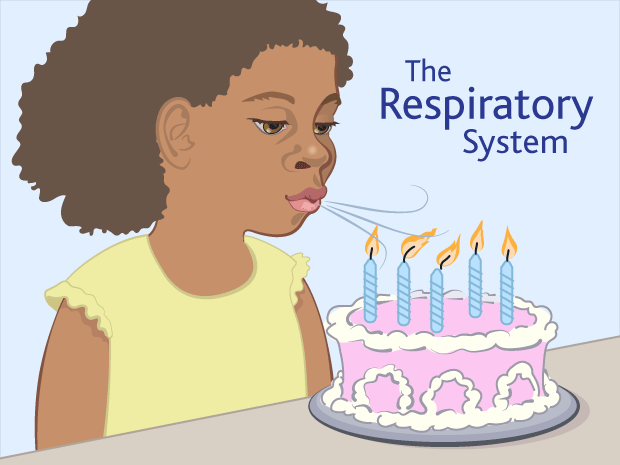
The Respiratory System
We take thousands of breaths a day, thanks to the respiratory system.
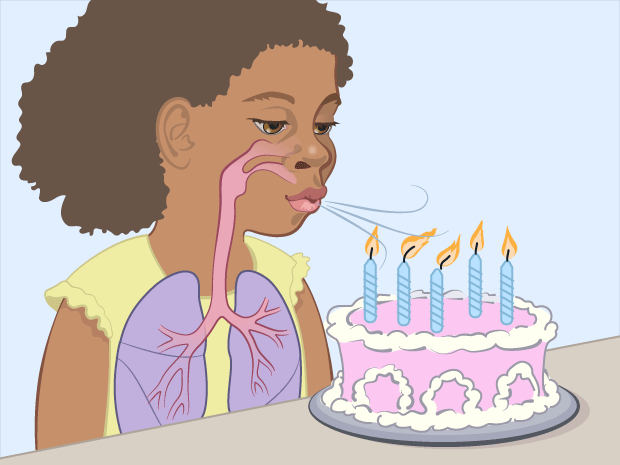
The Respiratory System
The nose, throat, and lungs are just a few parts of the body that make up the respiratory system. They work together to bring oxygen into the body and take carbon dioxide (a waste product) out.
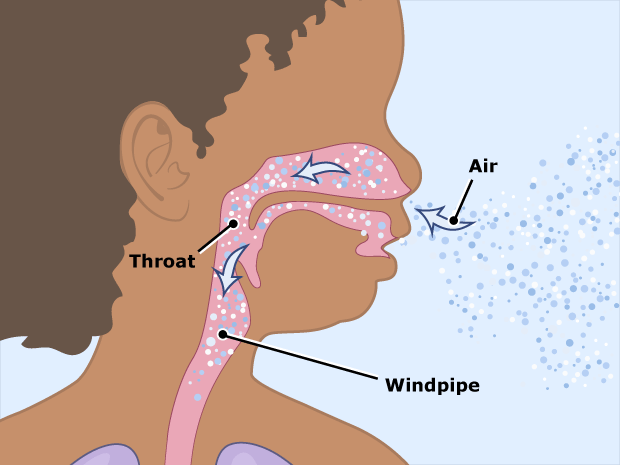
The Respiratory System
The body needs oxygen for energy. It gets this oxygen from the air around you.
When you breathe in through your nose or mouth, you pull air into your throat and down the windpipe.
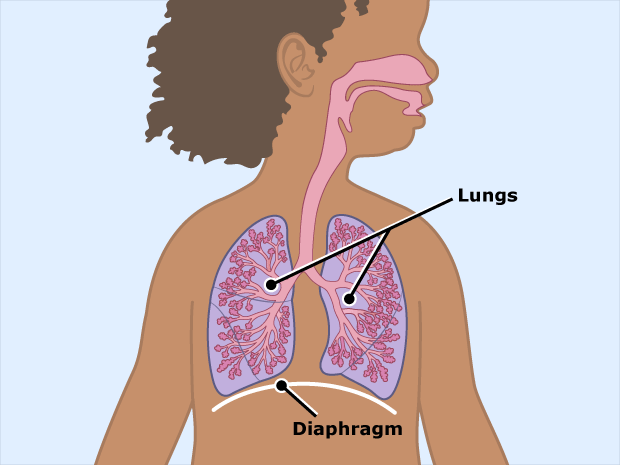
The Respiratory System
To pull air into the body (and push it out again), the body uses a strong muscle just below the lungs called the diaphragm.

The Respiratory System
From the windpipe, air moves into the lungs through tubes called bronchi. The bronchi lead to smaller tubes called bronchioles, which look like the branches of a tree.
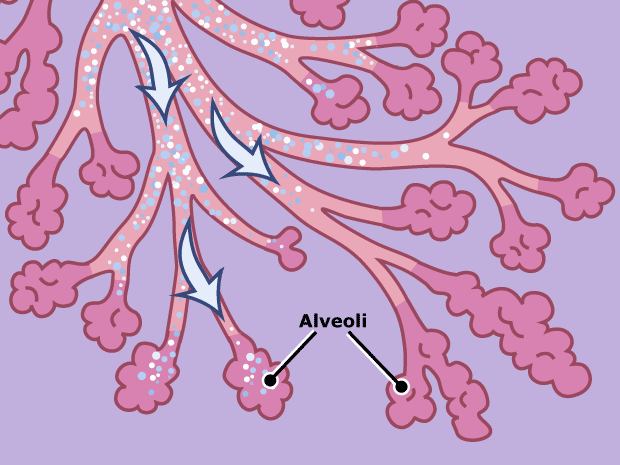
The Respiratory System
At the ends of the bronchioles are tiny sacs called alveoli.
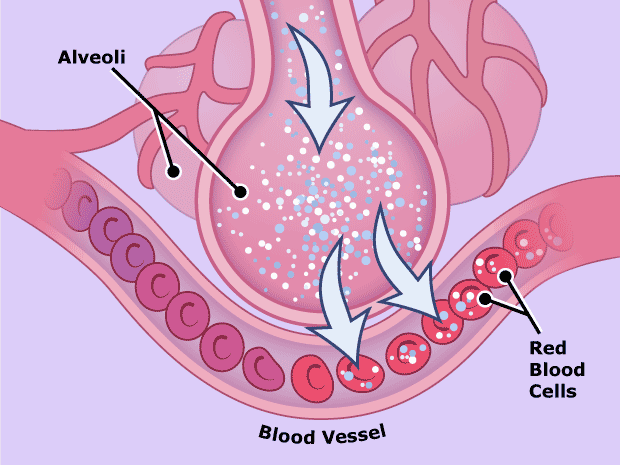
The Respiratory System
Oxygen gets into the blood through tiny blood vessels around the alveoli. Red blood cells pick up the oxygen and deliver it to the body's cells.
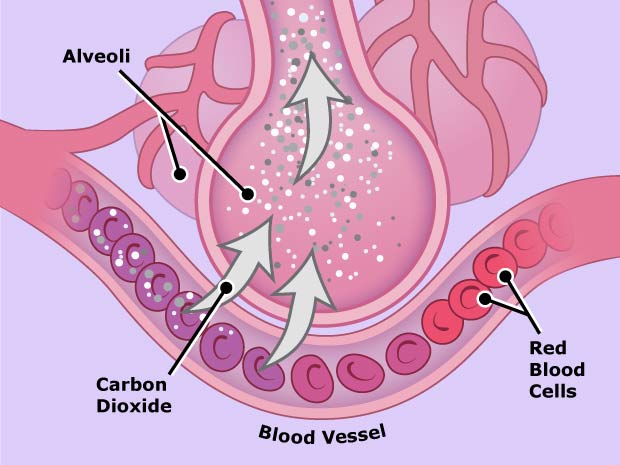
The Respiratory System
When you breathe out, the same thing happens – only in reverse. This is how the body gets rid of carbon dioxide.
The blood collects carbon dioxide from all over the body and carries it back to the air in the alveoli.
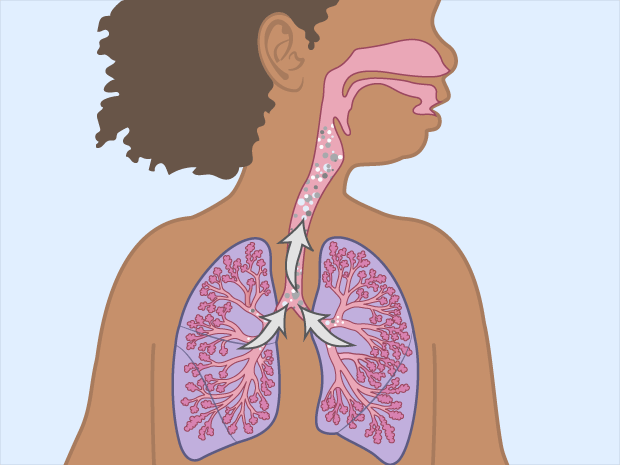
The Respiratory System
From the alveoli, air moves out of the lungs through the bronchioles and bronchi.
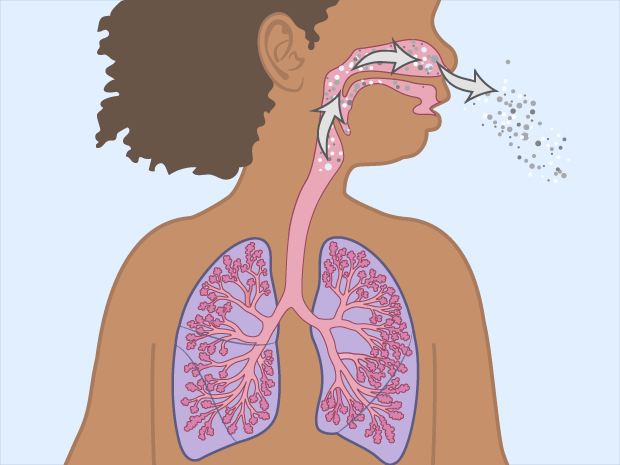
The Respiratory System
Finally, air leaves the body the same way it came in – through the nose or mouth.
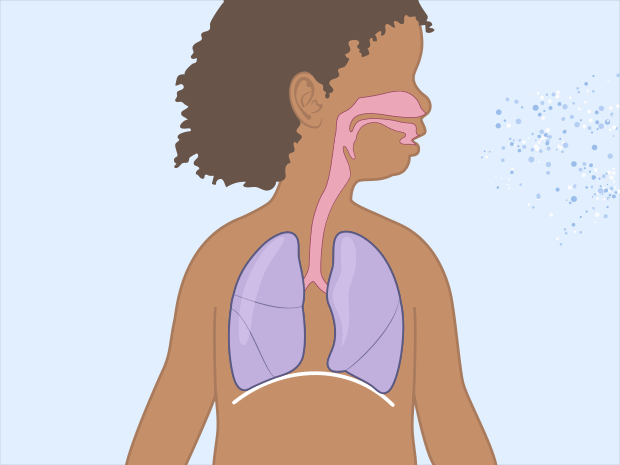
The Respiratory System
Let's watch this happen.
What Are the Parts of the Respiratory System?
The respiratory system includes the nose, mouth, throat, voice box, windpipe, and lungs.
Air enters the respiratory system through the nose or the mouth. If it goes in the nostrils (also called nares), the air is warmed and humidified. Tiny hairs called cilia (pronounced: SIL-ee-uh) protect the nasal passageways and other parts of the respiratory tract, filtering out dust and other particles that enter the nose through the breathed air.
The two openings of the airway (the nasal cavity and the mouth) meet at the pharynx (pronounced: FAR-inks), or throat, at the back of the nose and mouth. The pharynx is part of the digestive system as well as the respiratory system because it carries both food and air.
At the bottom of the pharynx, this pathway divides in two, one for food — the esophagus (pronounced: ih-SAH-fuh-gus), which leads to the stomach — and the other for air. The epiglottis (pronounced: eh-pih-GLAH-tus), a small flap of tissue, covers the air-only passage when we swallow, keeping food and liquid from going into the lungs.
The larynx, or voice box, is the top part of the air-only pipe. This short tube contains a pair of vocal cords, which vibrate to make sounds.
The trachea, or windpipe, is the continuation of the airway below the larynx. The walls of the trachea (pronounced: TRAY-kee-uh) are strengthened by stiff rings of to keep it open. The trachea is also lined with cilia, which sweep fluids and foreign particles out of the airway so that they stay out of the lungs.
At its bottom end, the trachea divides into left and right air tubes called bronchi (pronounced: BRAHN-kye), which connect to the lungs. Within the lungs, the bronchi branch into smaller bronchi and even smaller tubes called bronchioles (pronounced: BRAHN-kee-olz). Bronchioles end in tiny air sacs called alveoli, where the exchange of oxygen and carbon dioxide actually takes place. Each person has hundreds of millions of alveoli in their lungs. This network of alveoli, bronchioles, and bronchi is known as the bronchial tree.
The lungs also contain elastic tissues that allow them to inflate and deflate without losing shape. They're covered by a thin lining called the pleura (pronounced: PLUR-uh).
The chest cavity, or thorax (pronounced: THOR-aks), is the airtight box that houses the bronchial tree, lungs, heart, and other structures. The top and sides of the thorax are formed by the ribs and attached muscles, and the bottom is formed by a large muscle called the diaphragm (pronounced: DYE-uh-fram). The chest walls form a protective cage around the lungs and other contents of the chest cavity.
How Do the Lungs and Respiratory System Work?
The cells in our bodies need oxygen to stay alive. Carbon dioxide is made in our bodies as cells do their jobs.
The lungs and respiratory system allow oxygen in the air to be taken into the body, while also letting the body get rid of carbon dioxide in the air breathed out.
When you breathe in, the diaphragm moves downward toward the abdomen, and the rib muscles pull the ribs upward and outward. This makes the chest cavity bigger and pulls air through the nose or mouth into the lungs.
In exhalation, the diaphragm moves upward and the chest wall muscles relax, causing the chest cavity to get smaller and push air out of respiratory system through the nose or mouth.
Every few seconds, with each inhalation, air fills a large portion of the millions of alveoli. In a process called diffusion, oxygen moves from the alveoli to the blood through the capillaries (tiny blood vessels) lining the alveolar walls. Once in the bloodstream, oxygen gets picked up by the in red blood cells. This oxygen-rich blood then flows back to the heart, which pumps it through the arteries to oxygen-hungry tissues throughout the body.
In the tiny capillaries of the body tissues, oxygen is freed from the hemoglobin and moves into the cells. Carbon dioxide, made by the cells as they do their work, moves out of the cells into the capillaries, where most of it dissolves in the plasma of the blood. Blood rich in carbon dioxide then returns to the heart via the veins. From the heart, this blood is pumped to the lungs, where carbon dioxide passes into the alveoli to be exhaled.